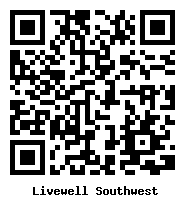Have your say, it matters to us!
Welcome to the Speech and Language Therapy Website. We are currently reviewing our website and will be making some changes based on feedback.
Have your say, it matters to us. Simply scan the QR code using the camera on your phone or click here to go straight to the survey.

The service is continuing to experience a very high volume of Requests for Help. Our current waiting time for assessment is over 12 months. From January 2022, to reduce the waiting time and ensure that every child accepted on the service waiting list receives timely support, children and young people on our waiting list will receive time limited support up to a maximum of 12 weeks.
Research evidence shows that the earlier the intervention the better the outcomes for children’s development. Intervention includes working closely with parents / carers and other professionals – providing advice, training and guidance to those who have daily contact with the child. As parents / settings you have a vital role in supporting your child to make progress. We will work closely with you to help you do this.
Please continue to see the service website to get some ideas about what you can do now to help a child’s speech, language or communication at home or in a school or nursery setting.
If there are any changes to your details/information, or your child no longer requires support from a Speech & Language Therapist please contact us.
We look forward to continuing working alongside you and supporting children with their speech, language and communication.
Children’s Speech and Language Service
You can contact us by:
Post: CYP Speech and Language Service, Four Greens Community Hub, Whitleigh Green, Plymouth PL5 4DD.
Telephone: 01752 434844 to discuss a Request for Help.
Email: [email protected]
Website: www.livewellsouthwest.co.uk/childrens-services/speech-and-language
Learning to communicate with others is one of the most important skills we develop. Unfortunately, it is common for some children to experience difficulty with speech and language as they mature.
Our friendly speech and language team is experienced in helping children who have difficulty speaking clearly, expressing themselves, communicating socially, understanding others, talking fluently, or feeding and swallowing.
We use fun games, images and new words to help your child with their listening, talking and sound-making skills.
Our open help system means if you are concerned about a child’s speech or language development, and they are living in Plymouth, you can request help from us. Please be aware, all requests for help discussions require parental consent.


NEW!
The Improving Access to Communication Services and Support (ICASS) programme is very excited to announce a new fantastic resource aimed at parents/carers and professionals of children from antenatal-5 years.
As part of the ‘LETS GET CHATTING’ campaign a group of professionals and parents/carers have developed a central resource that contains national and local information about speech, language and communication development from bump to 5 years old as well as providing a number of top tips on how best to support. It is free and very accessible and can be found at: https://padlet.com/togetherfordevonantenatalto5
Support for Early Years
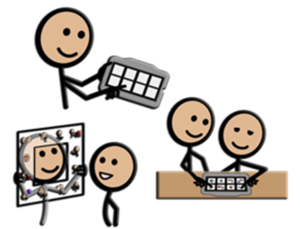 Augmentative and Alternative Communication (AAC)
Augmentative and Alternative Communication (AAC)
Augmentative and Alternative Communication (AAC) is a set of tools and strategies that can be used by an individual to communicate. For children and young people who have not developed spoken language or have only a little speech, AAC may provide options to reduce frustration and increase connections.
In order to raise awareness of what AAC is and how AAC can support children and young people to communicate, the Improving Access to Communication Services and Support (ICASS) programme has created a learning module, The module is free and can be accessed here.
The Speech and Language team have created some useful videos for you and your child below …
Speech & language: request for help
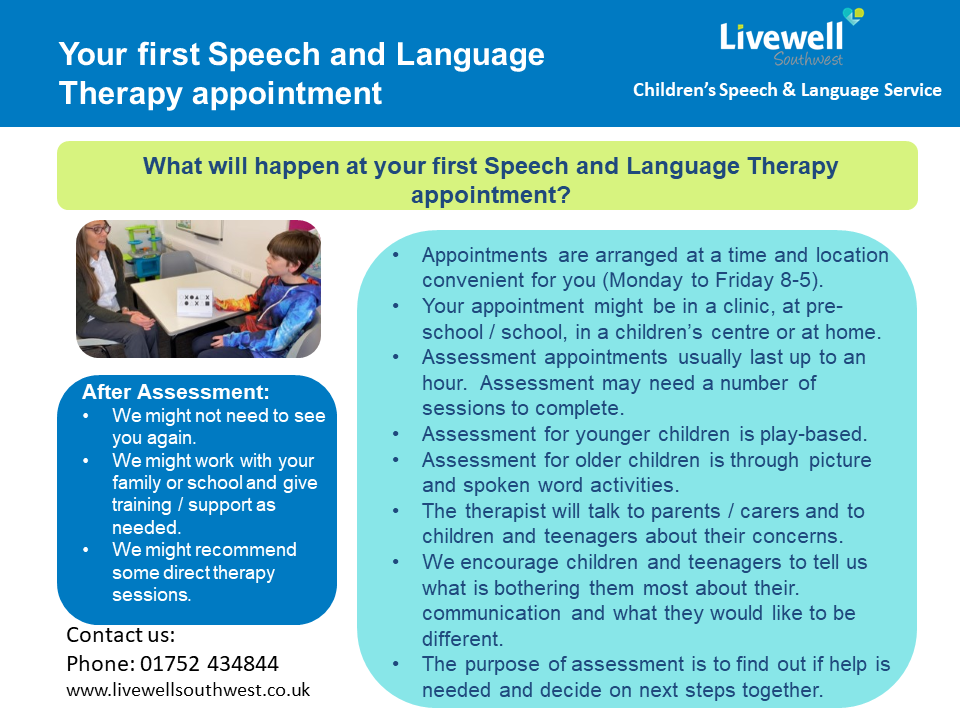
Keeping it simple
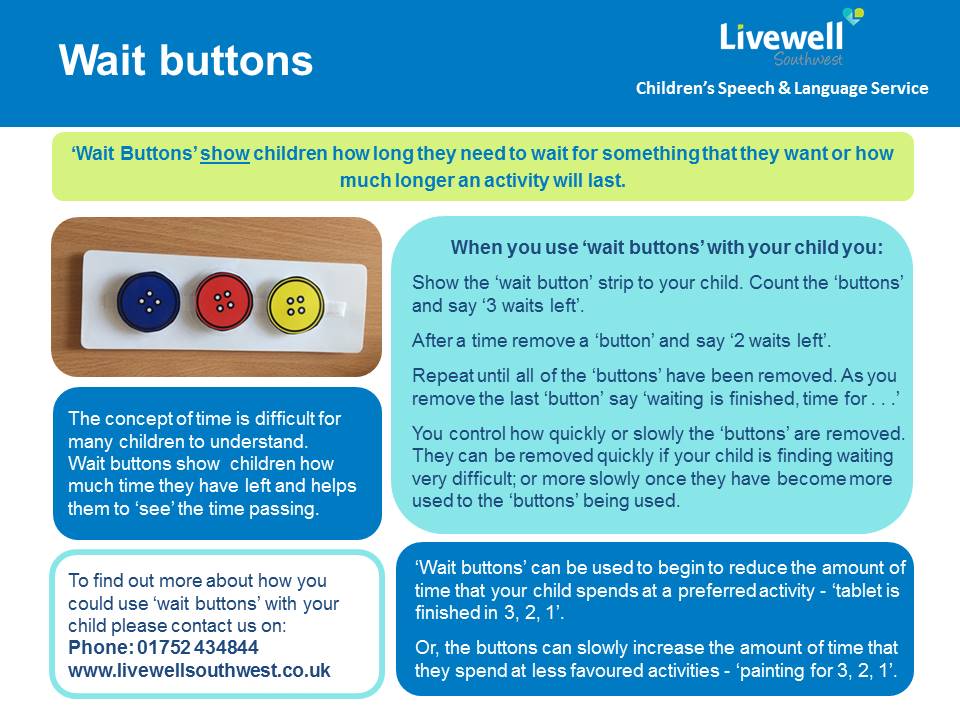
Creating opportunities for communication
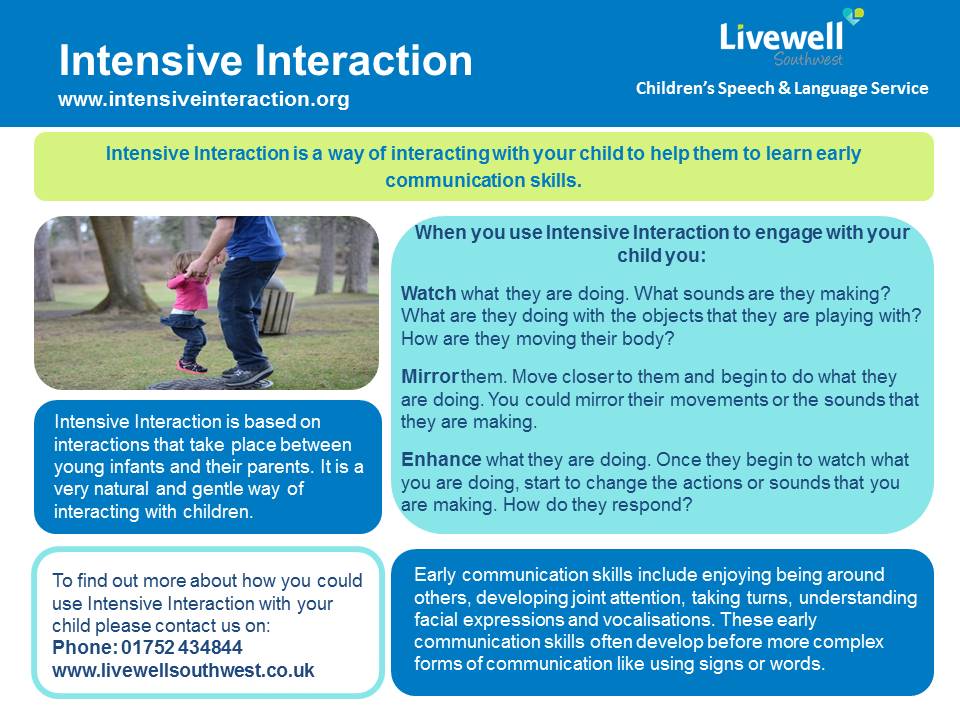
Objects of reference
Core vocabulary
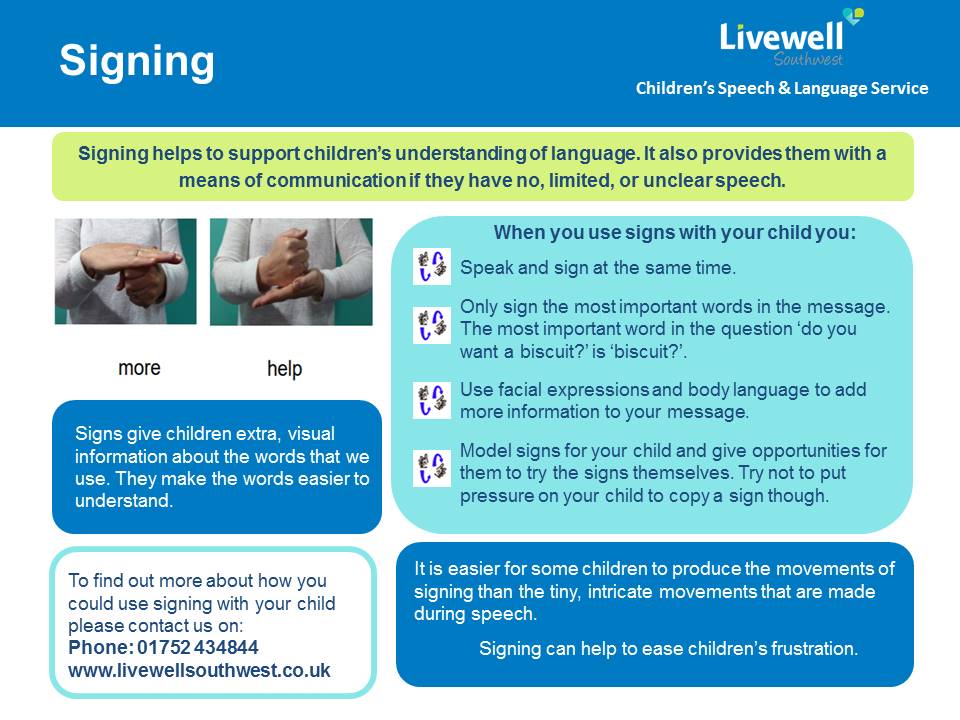
Blank Levels
Augmentative and Alternative Communication (AAC)
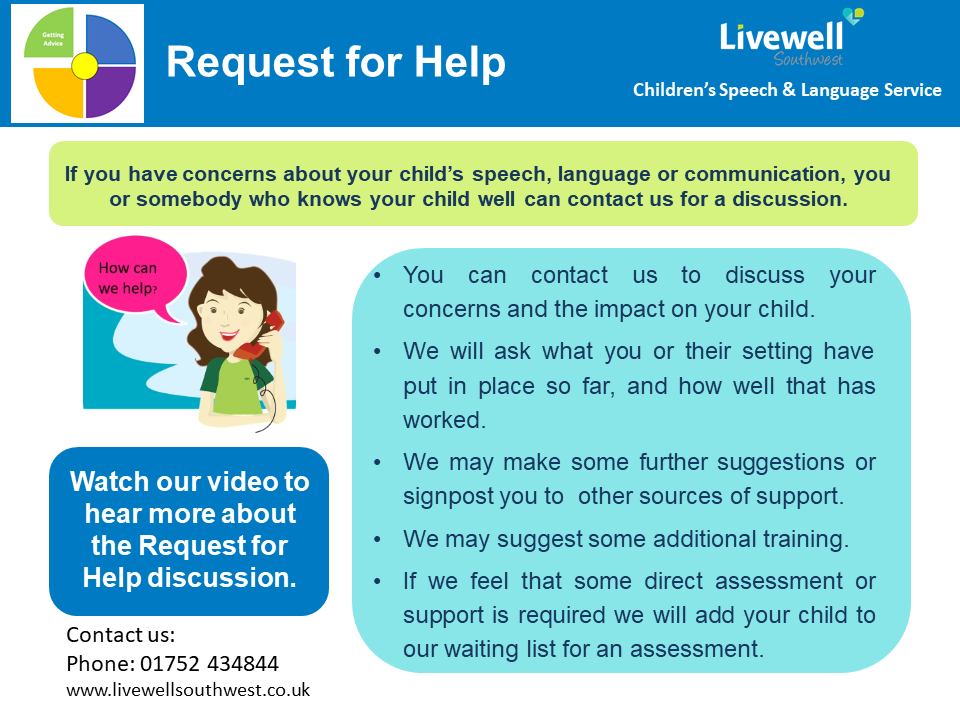
What to expect at your first Speech & Language appointment
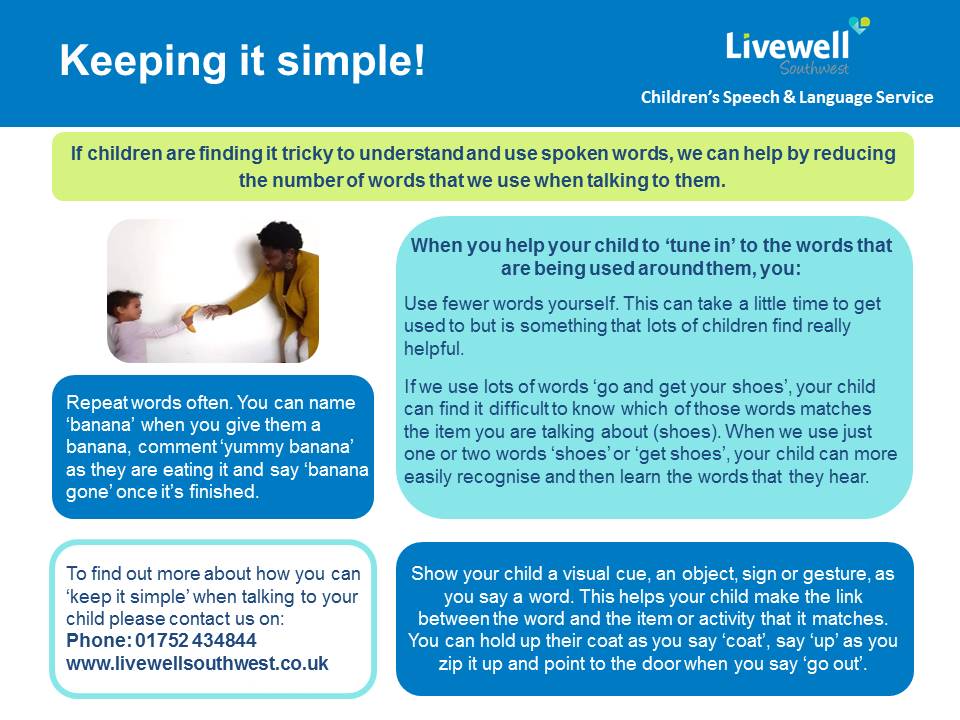
Wait buttons
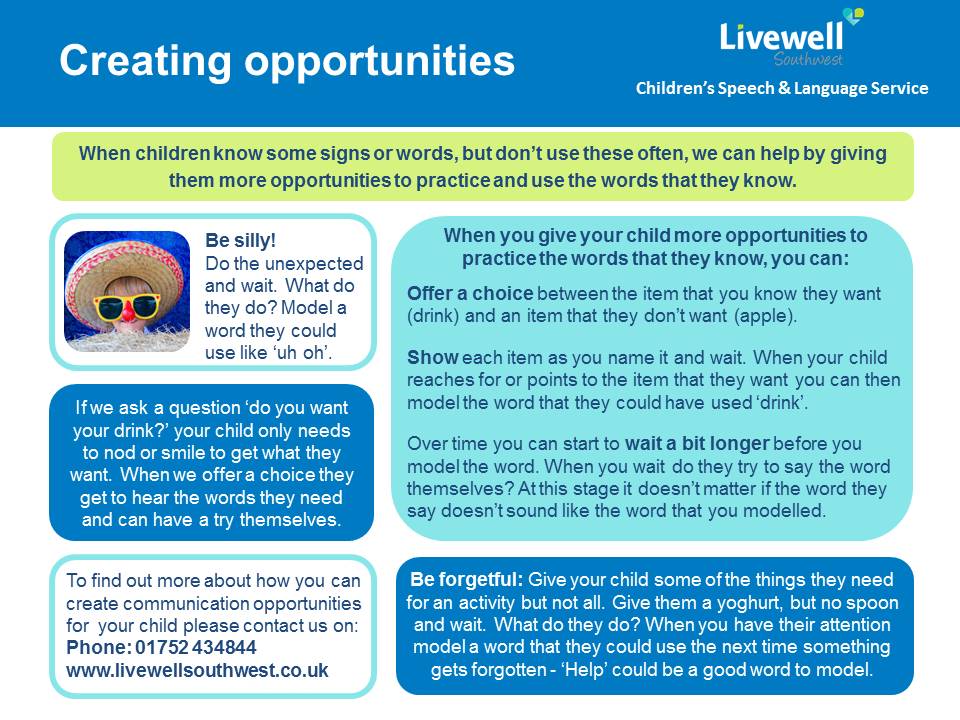
Intensive interaction
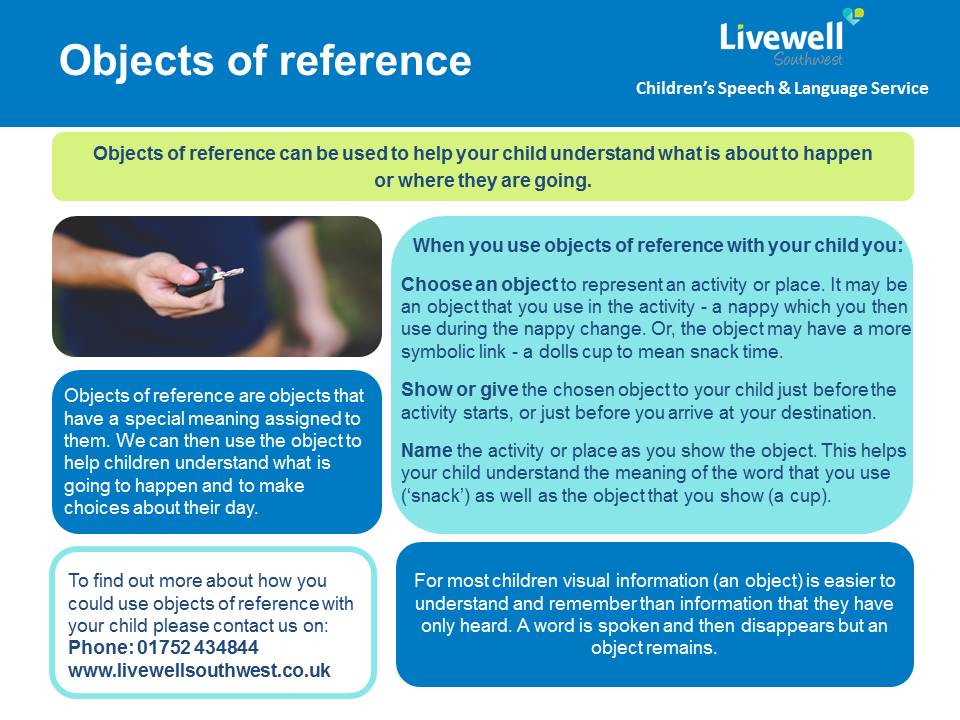
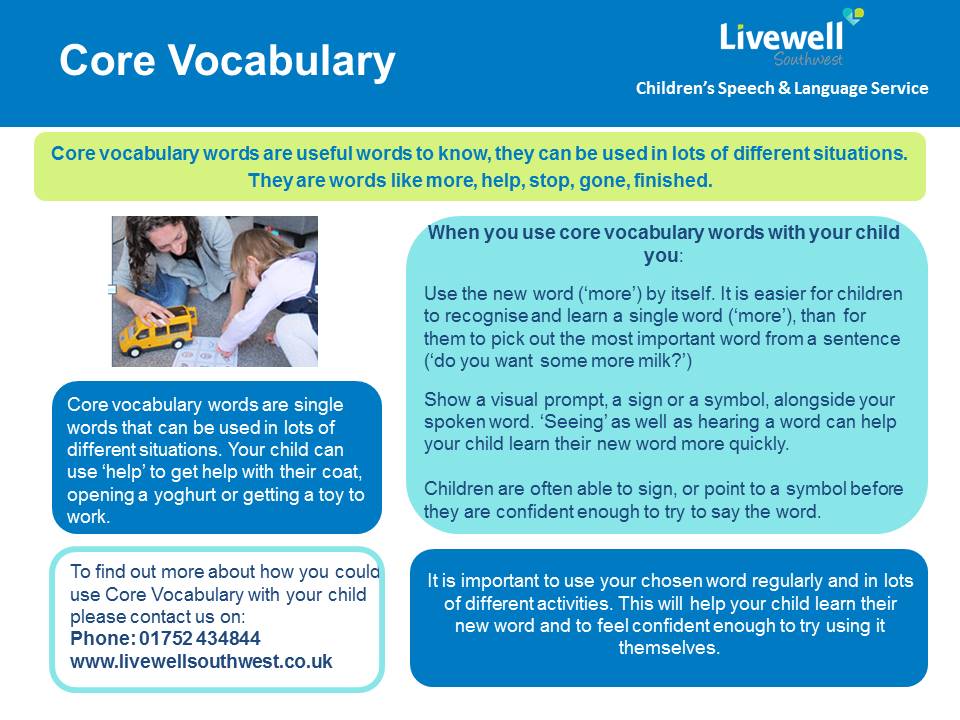
Signing
Information Carrying Words
Cued articulation
Cued articulation is a series of hand gestures to support a child who is having difficulty with their speech sounds. A child who has speech sound difficulties can often get confused as to when to use their new sound; even if they are able to imitate that sound in isolation.
Once you’ve had an explanation from a speech and language therapist, you may find the following videos useful as a reminder of the strategy:
Cued articulation introduction, click here.
Cued articulation, long sounds, click here.
Cued articulation, front and back sounds, click here.
Cued articulation, other sounds, click here.
Forms & Leaflets
The Children’s Speech and Language team have developed a wide range of informative leaflets and handouts.
Click here to view and download any of these materials.
As children are learning to talk their speech sounds develop gradually over a period of time, and it’s normal for them to make some errors as they learn to say new words. As a rough guide, children’s speech should be understood about 50% of the time at age two and 75-100% at the age of three.
Sometimes children do not master the sounds we would expect by a particular age and as a result their speech can be unclear and difficult to understand. Often they can make progress with support and practice but sometimes their difficulties can be longer lasting.
There may be a number of reasons why speech sound difficulties occur.
Developmental Language Disorder
Developmental Language Disorder (DLD) is a condition where children have problems understanding and/or using spoken language. There is no obvious reason for these difficulties, for example, there is no hearing problem or physical disability that explains them.
This results in children who have difficulty understanding what people say to them, and struggle to articulate their ideas and feelings. DLD can have a significant impact on progress at school, or on everyday life.
In the past DLD was known as specific language impairment (SLI) but recently the name has changed so that it better reflects the types of difficulties children have.
Click here for more information and resources.
Autistic Spectrum Condition
ASC is a lifelong developmental condition, impacting upon areas of communication, social interaction, interests and in processing sensory information. The word spectrum is used because although those with ASC share similar characteristics, they may be affected in different ways and will have their own strengths and areas of difficulty.
There are over 500,000 people with autism in the UK. The causes of ASC are still being researched. A lot of people say getting a diagnosis of autism has helped them understand why they have difficulties with some things and are especially good at others.
Common experiences that people with ASC share
- They may have a small range of interests that they are very passionate about
- They may have routines that they rely on and are a source of comfort
- They might find it difficult to work out what other people are thinking or feeling
- They might find the way that other people talk and behave confusing
Look behind the behaviour…
Special interests and repetitive behaviours can provide a source of enjoyment or comfort. Sometimes a person with autism can become overwhelmed in their environment – try to mitigate against stress by preparing in advance and if a person becomes overloaded give them plenty of time and space to recover without placing any additional demands on them.
Some people with ASC may find it challenging to…
- Adapt to new situations
- Understand emotions
- Understand the subtleties of language
- Reason and make decisions
- Make conversation
The positives…
- Ability to absorb and retain facts
- Observational skills
- Deep focus and concentration on subjects of interest
- Attention to detail
- Integrity and honesty
- Analytical approach
What can we do to help?
- Keep language simple
- Allow extra time for the person to respond
- Say the person’s name to get their attention
- Provide structure and routine to reduce anxiety
- Look at the environment to see if it is creating difficulties for the person – can you change anything?
- Some people benefit from visual support (e.g. photos, pictures or symbols) to help them understand
Neurodiversity
This is a relatively new term and a move away from the thought that autism is something to be cured, but instead is something to be valued as part of human neurodiversity. The term neurodiversity reminds us that diversity is a strength – embracing the concept of difference and offering support to those who need it without judgement.
National Autistic Society (autism.org.uk)
What is autism? | Ambitious about Autism
Student Resources | Neurodiversity Celebration Week (neurodiversityweek.com)
Hearing Impairment
Hearing difficulties can affect development of all or just some areas of speech and language, depending on the type and severity of the deafness.
Hearing impairment can vary from mild through to profound. The National Deaf Children’s society explains the difference between the two main types of deafness as:
Sensori-neural deafness, or nerve deafness as it is sometimes called, is a hearing loss in the inner ear.
Conductive deafness means that sound cannot pass through the outer and middle ear into the inner ear. This is often caused by blockages such as wax in the outer ear or fluid in the middle ear (glue ear).
Many children with conductive deafness are unable to hear certain speech sounds clearly, which in turn, affects their ability to say the words clearly. They may also have problems listening and concentrating, so their general language development may be delayed as well.
If you have concerns about your child’s hearing ask your health visitor or GP to refer them for a hearing test.
Stammering
Learning to talk, like learning to walk, is never completely smooth and does not happen straight away. Young children often stop, pause, start again and stumble over words when they are learning to talk. Between the ages of two and five years, it is normal for a child to repeat words and phrases, and hesitate with “um”s and “er”s, when he is sorting out what to say next.
Many find it easier to talk fluently as they get older. Others continue to find talking difficult and often get stuck.
What is stammering
You may notice your child
- is putting extra effort into saying his / her words
- has tense and jerky speech
- cannot seem to get started, no sound comes out for several seconds (“… I got a teddy”)
- is stretching sounds in a word (“I want a ssstory”)
- is repeating parts of words several times (“mu-mu-mu-mu-mummy”)
- stops what he /she is saying half way through his sentence.
These examples vary from child to child – you may hear some or all of these when your child talks.
It is not known exactly why a child stammers; it is likely that a combination of factors is involved. There is no evidence that parents cause stammering. It is about four times more common in boys than in girls. Stammering often runs in families and occurs worldwide in all cultures and social groups.
- the situation (eg: if it is noisy or quiet, rushed or relaxed, at home or in the nursery)
- whether your child is talking to friends, parents or strangers
- what he /she wants to say (eg: if it is complicated or easy, if the words are new or familiar)
- how he / she is feeling (unwell, tired, anxious, excited or confident).
Drooling
‘Drooling’ and ‘dribbling’ are different names for the same thing, which is when saliva, drool or dribble escapes from the mouth usually as a result of the child not swallowing often enough.
If your child begins to drool, encourage them to dab around their mouth with a tissue NOT wipe. Dabbing will help to reduce drooling but wiping encourages more drooling.
To download a drooling checklist, click here.
Feeding and Swallowing
Speech and Language Therapists will see infants and children who have eating, drinking and/or swallowing problems (dysphagia). This might be as a result of physical or mechanical feeding difficulties and there is a higher incidence of swallowing difficulties with people with learning difficulties.
Once your child has been seen by a Speech and Language Therapist, they will make make recommendations to support your child’s eating and drinking. These recommendations may include: messy food play; texture development; positioning of your child or the use of different utensils or ways of feeding.
Please note that we do not provide a service to children or young people who:
- Present with feeding difficulties as a result of sensory and/or behavioural issues affecting their eating and drinking.
- Are ‘fussy’ eaters
- Refuse to eat lumpy/chewy foods
- Generally refuse to eat
Bilingualism
Children who have English as a second language should not be regarded as having a speech and language difficulty.
Even children who have had limited exposure to English before going to school can become competent communicators in the new language.
However, some of these children may have speech and language difficulties in their home language as well as English and these children may require our support.
Referrals to the Speech and Language Service should be considered if you have concerns about a child’s communication in their home language or there are difficulties in both languages. You should also refer if there are concerns over their speech sounds in both languages; they are stammering or have voice quality and volume difficulties.
As with all referrals to Speech & Language Therapy, a hearing test should be considered.
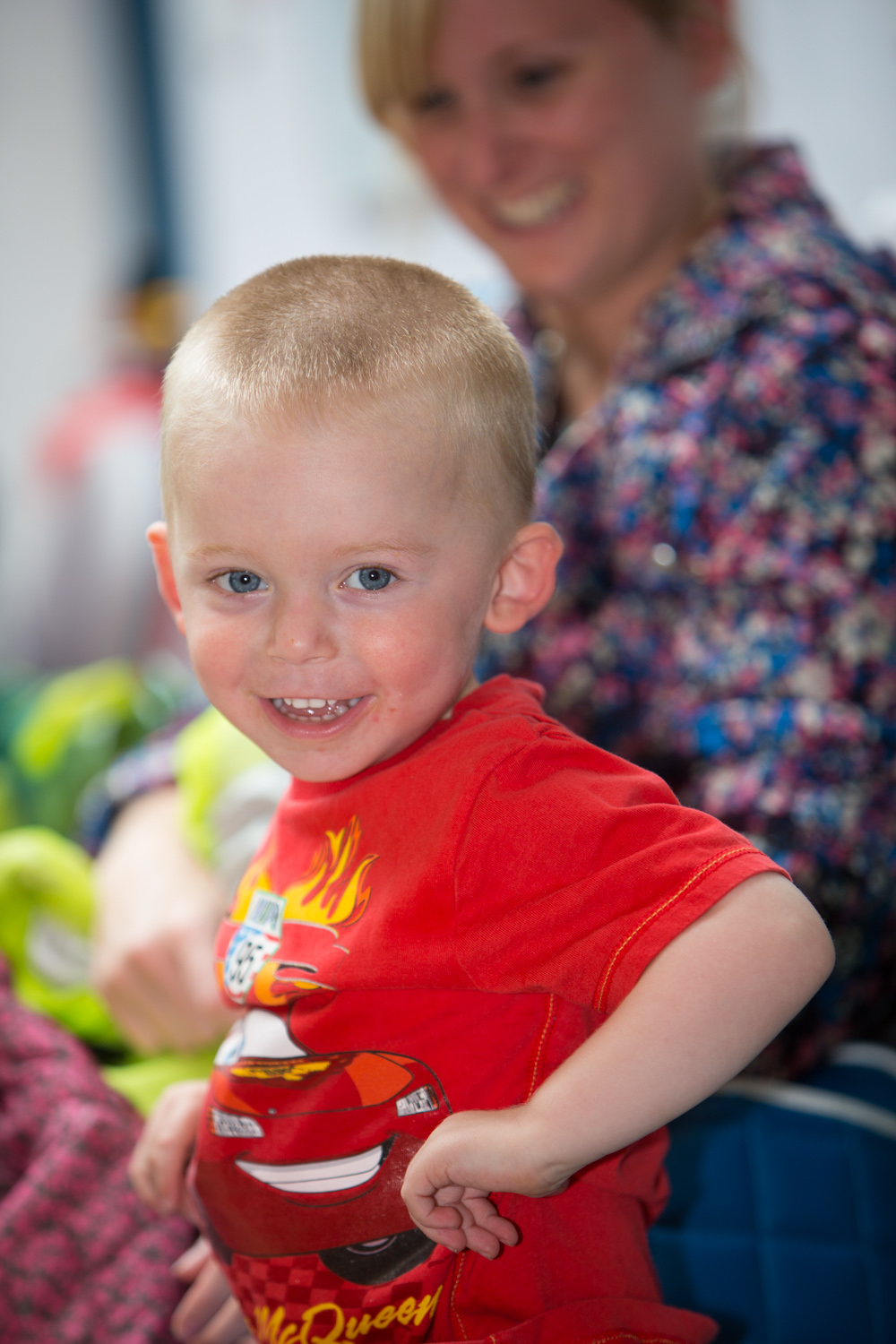
Children 0-5
Children starting school
- Accessing the curriculum – understanding what the teacher is saying.
- Literacy – Reading and writing skills
- Socially – playing and making friends
promote on-going development of understanding of language, speaking in longer sentences and speech skills.
7-11 years
Speech, language and communication development is a gradual process. Children develop skills at different rates, but beyond 8 years, usually children will:
- Use language to predict and draw conclusions.
- Use long and complex sentences.
- Understand other points of view and show that they agree or disagree.
- Understand comparative words e.g. ‘it was earlier than yesterday’.
- Keep a conversation going by giving reasons and explaining choices.
- Start conversations with adults and children they don’t know.
- Understand and use passive sentences e.g. “the thief is chased by the policeman”.
Survey
We would be grateful if you would complete a survey based on your experience of this service. Click here or use this QR code:
Contact
For general enquiries, or to be directed to a specific service or individual, please contact our switchboard on 01752 435502.






